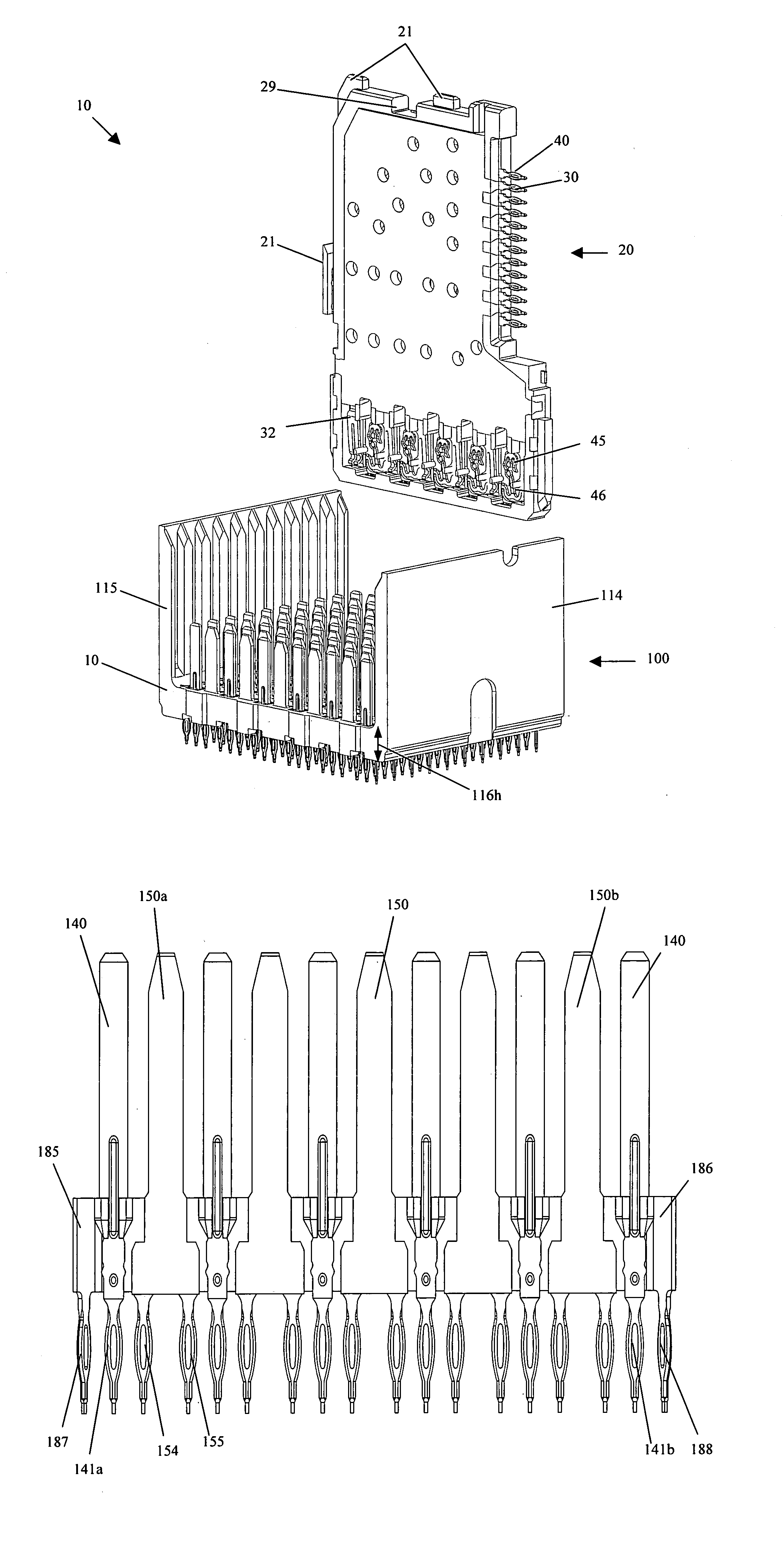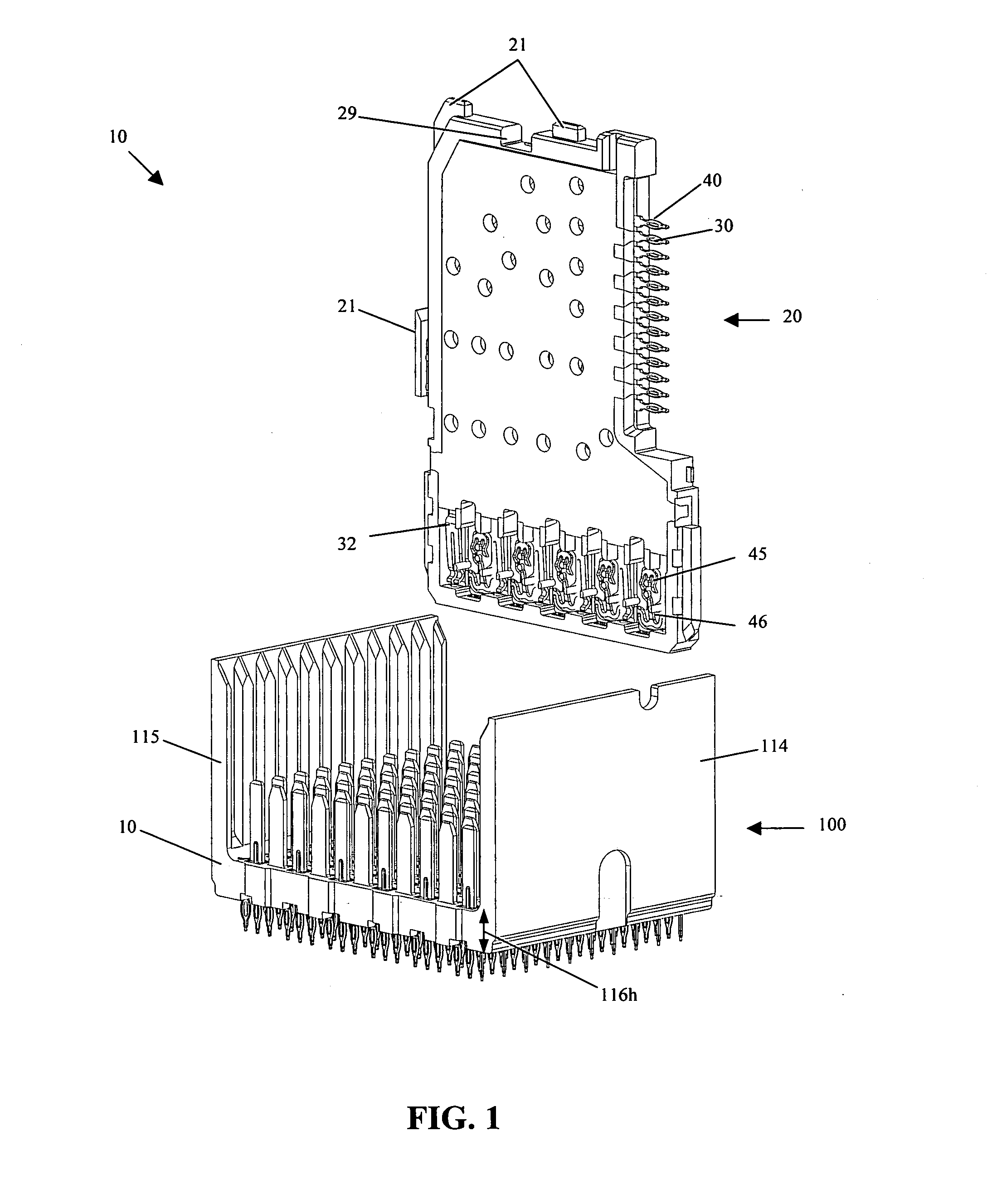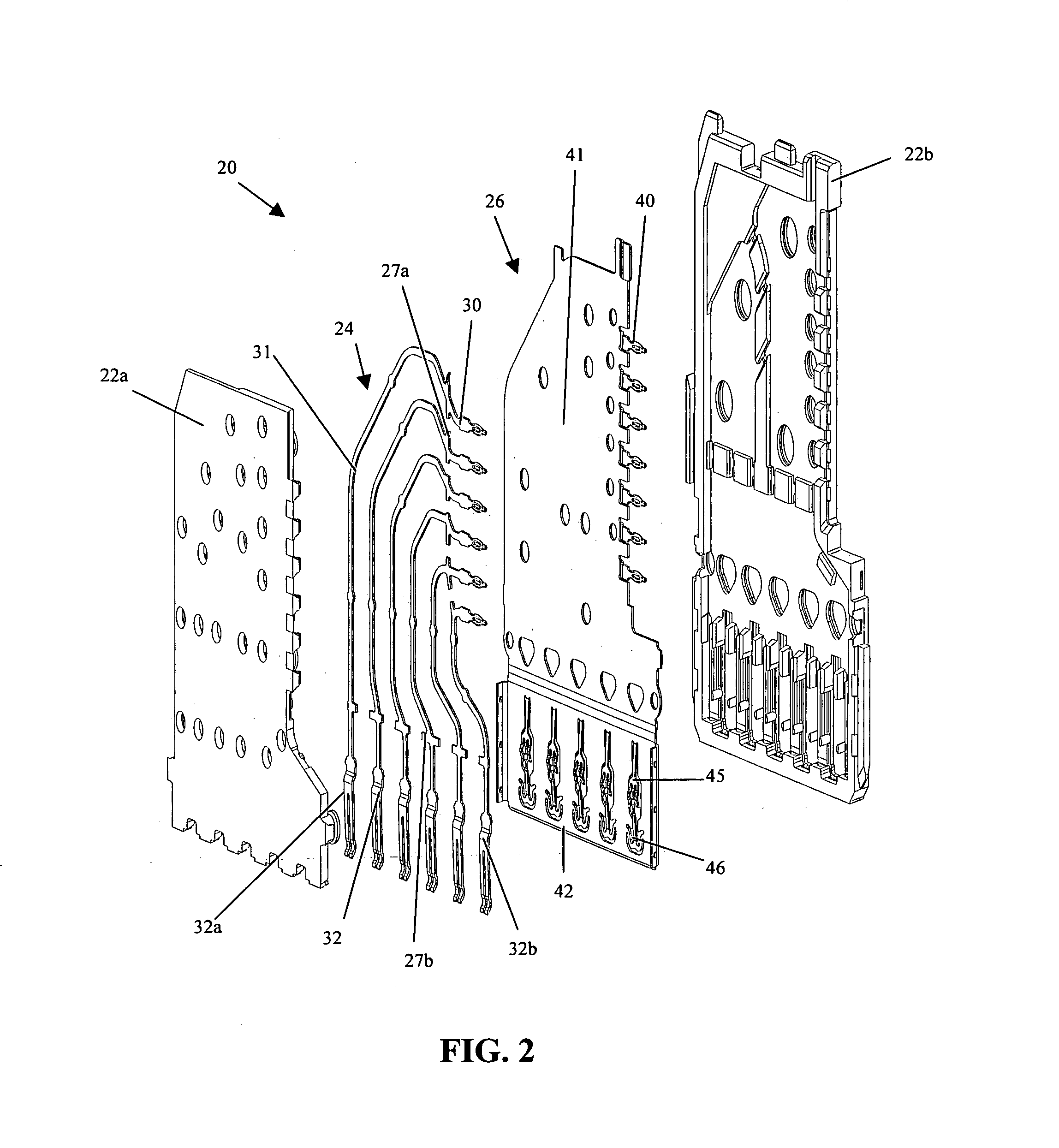High speed, high density electrical connector
a high density, electrical connector technology, applied in the direction of coupling device connection, connection contact member material, coupling protective earth/shielding arrangement, etc., can solve the problem of a large possibility of electrical noise being generated in the connector, a significant limitation on single-ended signal use of the system, and a large number of electrical noise generation
- Summary
- Abstract
- Description
- Claims
- Application Information
AI Technical Summary
Benefits of technology
Problems solved by technology
Method used
Image
Examples
Embodiment Construction
[0025]Referring to FIG. 1, there is shown an electrical connector assembly in accordance with an embodiment of the present invention. The electrical connector assembly 10 includes a first electrical connector mateable to a second electrical connector 100. The first electrical connector includes a plurality of wafers 20, only one of which is shown in FIG. 1, with the plurality of wafers 20 preferably held together by a stiffener (such as a stiffener 210 illustrated in FIG. 10). Note that each of the wafers 20 is provided with an attachment feature 21 for engaging the stiffener. For exemplary purposes only, the first electrical connector has ten wafers 20, with each wafer 20 having six single-ended signal conductors 24 and a corresponding shield plate 26 (see FIG. 2). However, as it will become apparent later, the number of wafers, the number of signal conductors and the number of shield plates may be varied as desired.
[0026]FIG. 2 is an exploded view of the wafer 20 of FIG. 1. The wa...
PUM
 Login to View More
Login to View More Abstract
Description
Claims
Application Information
 Login to View More
Login to View More - R&D
- Intellectual Property
- Life Sciences
- Materials
- Tech Scout
- Unparalleled Data Quality
- Higher Quality Content
- 60% Fewer Hallucinations
Browse by: Latest US Patents, China's latest patents, Technical Efficacy Thesaurus, Application Domain, Technology Topic, Popular Technical Reports.
© 2025 PatSnap. All rights reserved.Legal|Privacy policy|Modern Slavery Act Transparency Statement|Sitemap|About US| Contact US: help@patsnap.com



